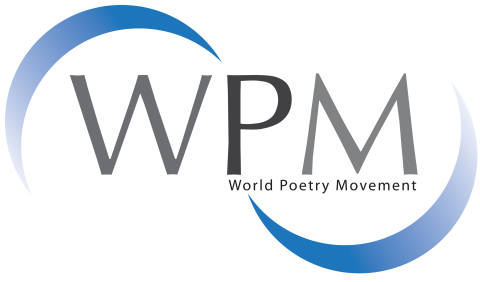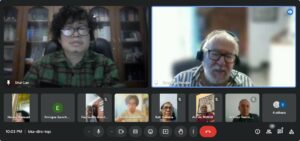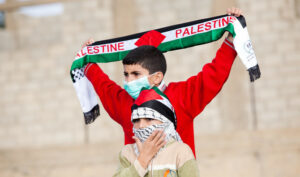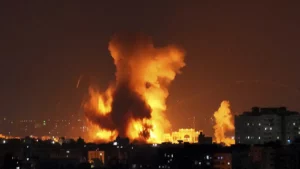By Dylan Brennan
In August 1994 rumours abounded, rumours that the IRA would cease all violent activity. For almost thirty years Northern Ireland had been witness to bombs, shootings and punishment beatings and, as this looked to be coming to an end, Michael Longley composed his poem ‘Ceasefire’. Longley’s poem is inspired by an episode in The Iliad which he refers to as ‘the greatest poem I know about war and death’. The episode in question describes how Priam, the king of Troy, makes his way beyond enemy lines to beg Achilles to return to him the corpse of Hector, his son. The poem culminates in this unforgettable couplet as Priam declares:
‘I get down on my knees and do what must be done
And kiss Achilles’ hand, the killer of my son.’
And that is, indeed, what needs to happen. After years of bloodshed and tribal recriminations, on both sides of the political spectrum, in order for peace to occur, in a region as small as Northern Ireland, forgiveness is imperative. Priam does just this, kissing the hand of the man who murdered his beloved son. Longley refers to the encounter between Achilles and Priam as ‘the soul of The Iliad’ and it is easy to see why. The epic ends with a truce, a period of calm in which Hector receives the burial he deserves and all violent activity is ceased. In this way, Longley, with this exquisite sonnet, provided what he referred to as a ‘tiny contribution to the peace process in Northern Ireland’. It is probably his best-loved poem.
The truce in The Iliad was, however, temporary. After a suitable period of peace, the war would start up again and rage as fiercely as before. And so it was in Northern Ireland, with the London Docklands bomb bringing the ceasefire to an end in February, 1996. The fact that the poet we refer to as Homer chose to bring his epic to a close with a cessation of violence shows the importance placed on a sense of brotherhood. The Iliad celebrates, as its climax, a moment of serene reflection, a moment of ritual, of ceremony. A funeral. But we know that this is only fleeting. The stupidity of men always seems to win. The killing will continue.
Is it possible to bring about peace through art, through poetry? Or, can poetry only register events, only commemorate? Is the poet just like the seismologist, able to register the violent jolts and tremors of local and global rumblings while, at the same time, powerless to prevent an earthquake? A couple of years ago I was asked to participate in Poets for Ayotzinapa a digital collection of poems to commemorate the disappearance (death) of 43 (more than 43) trainee teachers from Ayotzinapa in the south of Mexico at the hands of governmental forces. Taking my cue from Longley, I looked to the literature of the past. By a coincidence I happened to be re-reading some ancient Irish poetry and found an anonymous text entitled The Mothers’ Lament at the Slaughter of the Innocents. Speaking to me from across the centuries the poem cried out to be heard and I could not help equate the Biblical episode it described with both the Troubles in Northern Ireland and events in Mexico, where I live. It made me think of Ayotzinapa. And Acteal. And Atenco. And any time a mother lost her son or daughter to tyranny, to corruption, to impunity. I wanted to make the poem shorter, to get to its core. I cut it, rearranged it, made my own version. I called it ‘and what is my heart’:
and a woman said:
my breasts are milkless
my eyes are damp
my skeleton is frail it rattles
and what I want is this:
I want you to kill me
to kill me instead
and another woman said:
what am I without my child
and what is my heart
from this day till the last
a cold clot of blood
But those student teachers are still missing. Impunity remains. The poem commemorates them, remembers them, reminds us of what has happened. Implicit is a desire to resist tyranny by putting a human face on it. But it’s not a poem that changed anything.
Babi Yar, a ravine in the Ukrainian capital of Kiev, in which more than 33, 000 Jews were killed. After World War II the government’s refusal to erect a monument to commemorate the atrocity sparked Yevgeni Yevtushenko to compose his famous poem that begins:
No monument stands over Babi Yar.
Asleep cliff only, like the rudest headstone.
I am afraid.
Today, I am as old
As the entire Jewish race itself.
The poem produced a tremendous effect in Russia and proved that the shared consciousness of a people can, indeed, be shaped by poetry. Though the poet, not being Jewish, was not directly affected by the murders, he is filled with pain:
There is no Jewish blood that’s blood of mine,
But, hated with a passion that’s corrosive
Am I by anti-Semites like a Jew
And that is why I call myself a Russian!
And this is what is needed. For peace to flourish, all should reject tyranny, whether directly affected or not. Poetry may not always stop violence. It may never stop violence. But our job is always the same, to wonder at beauty, and to rage against brutality. I will not stand mute in the face of butchery. In the words of Irene Vega, whose poem ‘To the Students’ also featured in Poets for Ayotzinapa: ‘Let the others be silent / why should I be silent.’
Born in Dublin, Dylan Brennan is a poet, essayist, researcher and translator currently based in Mexico City. A graduate of Trinity College Dublin, Dylan completed his PhD at the Centre for Mexican Studies, University College Cork. He was the inaugural recipient of the San Patricio Fellowship as well as a previous recipient of the Daniel Cosío Villegas Government Fellowship for his research focused on the film and photographic work of Juan Rulfo. In 2014, his first collection of poems, Blood Oranges, was published by The Penny Dreadful Press. “Atoll”, a digital booklet, is available for free download from Smithereens Press. In 2016 he co-edited an anthology of essays on the work of Juan Rulfo. Rethinking Juan Rulfo’s Creative World: Prose, Photography, Film, is available from Legenda Books. His most recent book, GUADALUPE & other hallucinations, a collection of chronicles, was published by The Penny Dreadful Press, 2016.




